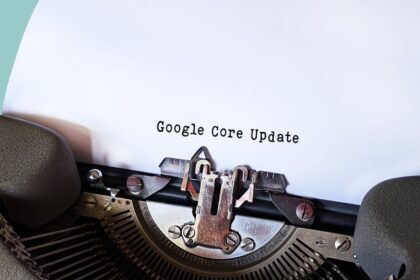Web accessibility is the practice of making websites usable by everyone, regardless of their abilities or disabilities. It extends the concept of inclusive design to the digital realm, ensuring that individuals with diverse needs can perceive, understand, navigate, and interact with web content effectively. This includes people with visual impairments (blindness, low vision, color blindness), auditory impairments (deafness, hard of hearing), cognitive impairments (learning disabilities, ADHD), motor impairments (limited dexterity, paralysis), and neurological conditions (epilepsy). Beyond permanent disabilities, accessibility also benefits those with temporary disabilities (e.g., a broken arm), situational limitations (e.g., using a mobile phone in bright sunlight), and even older adults experiencing age-related changes. The underlying principle is to remove barriers that prevent access to information and interaction, fostering true digital inclusion. By designing with accessibility in mind from the outset, organizations not only expand their potential audience but also enhance the user experience for all, simplify maintenance, and often improve search engine optimization (SEO).
The importance of web accessibility is multifaceted, encompassing ethical, legal, and business dimensions. Ethically, it aligns with fundamental human rights, asserting that access to information and communication technologies is a right, not a privilege. Denying access to digital content can perpetuate discrimination and exclusion. Legally, numerous national and international laws mandate digital accessibility, transforming it from a best practice into a legal imperative. In the United States, the Americans with Disabilities Act (ADA) has been broadly interpreted to apply to websites and mobile applications, leading to a surge in lawsuits against businesses with inaccessible digital properties. Section 508 of the Rehabilitation Act requires federal agencies to make their electronic and information technology accessible to people with disabilities. Globally, the European Union’s EN 301 549 standard mandates accessibility for public sector bodies, while the Accessibility for Ontarians with Disabilities Act (AODA) in Canada sets similar requirements. Non-compliance can result in significant legal penalties, reputational damage, and costly remediation efforts. From a business perspective, accessibility expands market reach, tapping into the considerable spending power of people with disabilities and their families. It enhances brand reputation, demonstrating corporate social responsibility and a commitment to inclusivity. Accessible websites often boast better usability for all users, leading to improved customer satisfaction, reduced bounce rates, and increased conversions. Furthermore, many accessibility best practices inherently improve SEO, making accessible sites more discoverable.
At the core of web accessibility standards is the Web Content Accessibility Guidelines (WCAG), developed by the World Wide Web Consortium (W3C). WCAG is a globally recognized benchmark, providing a comprehensive set of recommendations for making web content more accessible. It is structured around four core principles, often remembered by the acronym POUR: Perceivable, Operable, Understandable, and Robust. Each principle is further broken down into guidelines, and those guidelines into testable success criteria, categorized into three conformance levels: A (lowest), AA (mid-range and most commonly targeted for legal compliance), and AAA (highest). Adhering to WCAG 2.1 AA is widely considered the industry standard for achieving a good level of accessibility.
Perceivable: This principle dictates that information and user interface components must be presentable to users in ways they can perceive. It means that users must be able to recognize the content and interface, regardless of their sensory abilities. Key aspects include:
- Text Alternatives: All non-text content, such as images, charts, graphs, and buttons, must have a text alternative. This “alt text” serves as a descriptive label that can be read aloud by screen readers or displayed if the image fails to load. For informative images, alt text should convey the essential information or function. For decorative images, a null alt attribute (
alt="") is appropriate to ensure screen readers skip over them. Complex images, like infographics, may require a short alt text description combined with a longer text equivalent nearby or linked. Ensuring images have appropriate, concise, and contextually relevant alt text is fundamental. Images used as links should have alt text that describes the link’s destination or action. - Time-based Media Alternatives: For multimedia content, equivalent alternatives are crucial. Videos must have captions for spoken content (synchronized text), ideally close-captioned (CC) so users can toggle them on/off. Transcripts, providing a full text version of all audio and visual information, are essential for both audio-only content (podcasts) and video content, allowing users who are deafblind or prefer to read at their own pace to access the information. Audio descriptions, which narrate visual details for users who are blind or have low vision, are vital for videos where visual information is critical to understanding the content and is not conveyed through the main audio track. For pre-recorded video, these descriptions can be inserted during natural pauses; for live video, live audio descriptions may be required.
- Adaptable Content: Content must be presented in various ways without losing information or structure. This means using semantic HTML elements correctly, such as headings (
). This structure allows assistive technologies to interpret and navigate content logically. Responsive design ensures content adapts to different screen sizes and orientations, benefiting users on mobile devices or those who zoom in significantly. Users should be able to resize text up to 200% without loss of content or functionality, and content should reflow rather than requiring horizontal scrolling. Information conveyed through tables should be marked up correctly withfor headers and - Distinguishable Content: It must be easy for users to see and hear content. This involves ensuring sufficient color contrast between text and its background. WCAG 2.1 AA requires a contrast ratio of at least 4.5:1 for normal text and 3:1 for large text (18pt or 14pt bold). Non-text components like icons or graphical objects that convey information must also meet contrast requirements. Color should never be the only means of conveying information; for example, indicating required form fields with only red text is insufficient. Using icons, labels, or asterisks in conjunction with color ensures accessibility for colorblind users. Audio content should allow users to control volume and minimize background noise, making speech discernible. Avoiding automatic playing audio or video is also crucial, as unexpected sound can be disorienting or difficult for screen reader users to manage.
Operable: This principle ensures that user interface components and navigation must be operable, meaning users must be able to interact with and control the website.
- Keyboard Accessibility: All functionality available via mouse must also be accessible via keyboard alone. This is critical for users who cannot use a mouse, including those with motor impairments who rely on keyboard navigation, switch devices, or voice input software that emulates keyboard commands. A logical and predictable tab order (
tabindex) is essential, allowing users to navigate through interactive elements (links, buttons, form fields) sequentially. Focus indicators (visual outlines or highlights) must be clearly visible as users tab through elements, indicating the currently focused item. Crucially, keyboard "traps" must be avoided; users must be able to move focus away from any interactive element using standard keyboard commands (e.g., Tab, Shift+Tab) without being stuck. Custom interactive components built with JavaScript must ensure that standard keyboard interactions (Enter, Spacebar for buttons; Arrow keys for menus/sliders) are fully supported. - Enough Time: Users need sufficient time to read and interact with content. This includes providing options to pause, stop, or hide moving, blinking, or scrolling content (like carousels or news tickers). Time limits for user interaction (e.g., session timeouts) should be adjustable, allowing users to extend them, or users should be warned before automatic logouts occur. Content that flashes or blinks more than three times per second must be avoided, as it can trigger seizures in individuals with photosensitive epilepsy.
- Navigable: Websites must provide clear, consistent, and intuitive navigation. Users need multiple ways to find content, such as sitemaps, search functions, and consistent navigation menus. Headings should be used to provide a clear hierarchical structure to content, making it scannable for all users and allowing screen reader users to jump directly to sections. Skip links, typically hidden until tab-focused, allow keyboard users to bypass repetitive navigation menus and jump directly to the main content area, saving significant time. Link text should be descriptive and unambiguous, avoiding generic phrases like "click here" or "read more." The purpose of a link should be clear from its text or its context.
- Input Modalities: Beyond keyboard access, consideration for various input methods is essential. This relates to target sizes for interactive elements; touch targets on mobile devices should be large enough (WCAG recommends at least 44x44 CSS pixels) to be easily activated by users with limited dexterity. Gestures requiring complex paths or multiple points of contact should have a single-pointer equivalent for users who cannot perform them. Voice input should be fully supported, meaning interactive elements are properly labeled and structured.
Understandable: This principle focuses on ensuring that information and the operation of the user interface are understandable. Users must be able to comprehend the content and how to operate the interface.
- Readable: Content should be clear and concise. The primary language of the web page should be programmatically identified (e.g.,
). Changes in language within a page should also be marked (), allowing screen readers to switch pronunciation. Text should be written in plain language, avoiding jargon where possible. Complex terms should be explained. Large blocks of text should be broken into shorter paragraphs, using bullet points or numbered lists to improve readability. A consistent visual presentation of text (font sizes, line height, letter spacing) contributes to readability. - Predictable: The layout, navigation, and functionality of a website should be consistent throughout. Navigation menus, logos, search bars, and other common elements should appear in the same relative location on every page. Interactive components should behave predictably when activated. For example, a button should always perform an action, while a link should always navigate to a new page or section. This consistency reduces cognitive load and helps users with cognitive disabilities, as well as new users, to learn and remember how to interact with the site.
- Input Assistance: Forms are a common source of accessibility barriers. Users must be able to avoid and correct errors. Labels for all form fields must be present and correctly associated with their input elements using the
attribute. Instructions for completing forms should be clear, concise, and visible. When an input error occurs, the error must be clearly identified to the user, and an accessible message explaining the error and providing suggestions for correction should be provided. For example, usingaria-invalid="true"for invalid fields and linking error messages to the relevant input field usingaria-describedby. For critical data or financial transactions, mechanisms to prevent errors (e.g., confirmation steps) or allow users to reverse changes are important. Placeholders alone are not sufficient labels as they disappear once a user starts typing.
Robust: This principle dictates that content must be robust enough that it can be interpreted reliably by a wide variety of user agents, including assistive technologies.
- Compatibility: Websites should be developed using well-formed HTML and CSS, adhering to coding standards. This ensures that content can be reliably parsed by browsers and assistive technologies alike. Custom widgets and dynamic content often require the use of Accessible Rich Internet Applications (ARIA) attributes. ARIA provides a set of roles, states, and properties that can be added to HTML elements to convey semantic meaning and interactivity that native HTML elements do not inherently provide. For example,
role="button"can be added to aelement to make it behave like a button for screen readers, whilearia-expanded="true"can indicate the state of an accordion panel. Usingaria-liveregions can announce dynamic content changes (like form validation messages or search results updates) to screen reader users without requiring them to manually refresh or navigate. This ensures that assistive technologies can correctly interpret and interact with components, providing a consistent experience.Practical Implementation & Techniques for Accessible Content:
Semantic HTML: The foundation of an accessible website is well-structured, semantic HTML.
- Headings: Use
- Lists: Use
- Landmark Roles: HTML5 elements like
,roleattributes (e.g.,role="navigation",role="main") can provide similar functionality. - Buttons vs. Links: Use
elements for actions that modify the current page state (e.g., submitting a form, toggling a menu) andelements for navigation to another page or section within the same page. This distinction is crucial for assistive technologies to correctly convey the element's purpose.
Images & Multimedia:
- Alt Text Strategies:
- Informative Images:
alt="A detailed photo of a red fox pouncing in snow, capturing a mouse."(Describe the content and purpose). - Decorative Images:
alt=""(Empty alt attribute for images that serve only aesthetic purposes and convey no information). - Functional Images (Icons/Buttons):
alt="Search"oralt="Download PDF"(Describe the action or destination). - Complex Images (Charts, Infographics): Provide a concise
altattribute (e.g.,alt="Sales performance chart, see following section for details.") and then a longer description in the surrounding text or a linked full description.
- Informative Images:
- Image Maps: If using image maps, ensure each active area has a descriptive
altattribute for its respective
- Video Captions: Provide synchronized captions in formats like WebVTT or SRT. These should include not just spoken dialogue but also significant sound effects (e.g.,
[door creaks],[ominous music]). - Transcripts: Offer full text transcripts for all audio and video content. These benefit users who cannot hear, users who cannot see (and need to understand visual components described), and those who prefer to read. They also significantly boost SEO by providing crawlable text content.
- Audio Descriptions: For videos where visual information is critical and not conveyed in the dialogue, provide a separate audio track or text description of visual elements.
Forms:
- Explicit Labels: Always associate labels with their input fields using the
forandidattributes:. This allows screen readers to correctly announce the purpose of the input field. - Instructions: Provide clear instructions for complex forms or specific input requirements. For example, explain expected date formats or password requirements. These can be associated with fields using
aria-describedby. - Error Handling:
- Identify errors clearly and concisely.
- Place error messages near the field in error, and make them programmatically discoverable (e.g., using
aria-live="assertive"for dynamic messages). - Provide specific suggestions for correction (e.g., "Email address format is incorrect, please enter 'name@example.com'").
- Mark erroneous fields with
aria-invalid="true".
- Required Fields: Indicate required fields clearly, not just with an asterisk (which might not be announced by screen readers). Use
aria-required="true"or add a visual text like "(required)".
Navigation:
- Skip Links: Implement a "Skip to Main Content" link at the very top of the page, visible only when keyboard-focused. This allows users to bypass repetitive navigation links.
- Focus Management: Ensure that interactive elements receive a visible focus indicator when navigated to by keyboard. When custom components (like modals or dropdowns) are opened, keyboard focus should be moved into them and trapped within until closed. When closed, focus should return to the element that triggered the component.
- Breadcrumbs: Provide breadcrumbs for complex site structures, aiding users in understanding their location within the site hierarchy.
- Consistent Navigation: Main navigation menus, search bars, and footer links should appear consistently across all pages.
Color & Contrast:
- WCAG Contrast Ratios: Use tools to check color contrast for text and interactive elements. Aim for WCAG 2.1 AA (4.5:1 for normal text, 3:1 for large text). For AAA, it's 7:1 for normal text and 4.5:1 for large text.
- Avoid Color-Only Information: Never rely solely on color to convey meaning. For example, instead of just coloring required form fields red, add text like "(required)" or an asterisk, and use an icon. In charts, use different patterns or labels in addition to color.
Dynamic Content & JavaScript (ARIA):
- ARIA Roles, States, Properties: Use ARIA attributes to add semantic meaning to custom interactive components that lack native HTML equivalents.
role="button"for adivacting as a button.aria-expanded="true/false"for accordion headers or dropdown toggles.aria-current="page"for the current page in a pagination component.aria-labelledbyoraria-describedbyto link descriptive text to an element.
- Live Regions: For content that updates dynamically without a page reload (e.g., search results, notification messages, real-time stock tickers), use
aria-liveregions.aria-live="polite"for non-critical updates (e.g., "Item added to cart").aria-live="assertive"for critical, time-sensitive updates (e.g., "Error: Please correct the highlighted fields.").
- Modals/Dialogs: When a modal window opens, ensure keyboard focus moves into the modal and is trapped within it. The rest of the page content should be inaccessible (e.g., by using
aria-modal="true"). When the modal closes, focus should return to the element that triggered it. - Carousels/Sliders: Provide clear navigation controls (previous/next buttons, pagination dots). Ensure they are keyboard-accessible and have appropriate ARIA labels. Crucially, allow users to pause or stop the auto-play functionality.
PDFs and Documents:
- Tagged PDFs: Create "tagged" PDFs from source documents (e.g., Microsoft Word, Adobe InDesign). Tags provide a logical structure that screen readers can interpret, similar to semantic HTML.
- Accessibility Checkers: Use built-in accessibility checkers in software like Adobe Acrobat Pro.
- Alternative Formats: Whenever possible, provide the content of PDFs directly on a web page or offer a truly accessible HTML version as an alternative. PDFs often pose significant accessibility challenges, especially for complex layouts.
Third-Party Widgets & Iframes:
- Vendor Responsibility: If using third-party widgets (e.g., embedded maps, social media feeds, chat bots), ensure they are accessible. Request accessibility conformance reports (e.g., VPATs) from vendors.
- Iframes: Provide a descriptive
titleattribute forelements to help screen reader users understand the purpose of the embedded content:. The content within the iframe itself must also be accessible.
Content Writing & Readability:
- Plain Language: Write clear, concise content using simple vocabulary and sentence structures. Avoid jargon, slang, or overly complex prose. Use tools like readability checkers (e.g., Flesch-Kincaid).
- Logical Flow: Organize content logically with clear topic sentences and transitions between paragraphs.
- Chunking Content: Break large blocks of text into smaller, digestible chunks using headings, subheadings, bullet points, and short paragraphs.
- Acronyms and Abbreviations: Spell out acronyms and abbreviations on their first use (e.g., "Web Content Accessibility Guidelines (WCAG)").
- Link Text: Ensure link text is descriptive and meaningful out of context. Instead of "Click here," use "Read our full accessibility statement."
Tools and Testing for Accessibility:
Achieving and maintaining web accessibility requires a multi-faceted approach to testing, leveraging both automated tools and manual reviews.
-
Automated Accessibility Tools: These tools can quickly scan a website and identify common, easily detectable accessibility errors. They are excellent for catching violations related to color contrast, missing alt text, missing form labels, and basic semantic HTML issues.
- Lighthouse (Google Chrome DevTools): Built directly into Chrome, Lighthouse provides an accessibility score and detailed suggestions for improvement.
- Axe DevTools (Deque Systems): A browser extension and robust API that can be integrated into development workflows. It's highly accurate and provides actionable recommendations.
- WAVE (Web Accessibility Evaluation Tool by WebAIM): A free online tool and browser extension that overlays accessibility issues and structural elements directly onto your webpage.
- Siteimprove, Level Access (formerly Tenon.io), eSSENTIAL Accessibility: Enterprise-level platforms offering comprehensive site-wide scanning, reporting, and remediation guidance.
- Limitations: Automated tools can only detect about 30-50% of WCAG violations. They cannot assess the contextual appropriateness of alt text, the logical order of content, or the usability of keyboard navigation.
-
Manual Accessibility Testing: This is crucial to catch issues that automated tools miss.
- Keyboard Navigation Testing: Navigate the entire website using only the keyboard (Tab, Shift+Tab, Enter, Spacebar, Arrow keys). Check if all interactive elements are reachable, if focus indicators are visible, and if there are any keyboard traps. This is the most fundamental manual test.
- Screen Reader Testing: Use popular screen readers like NVDA (NonVisual Desktop Access, free for Windows), JAWS (Job Access With Speech, commercial for Windows), or VoiceOver (built-in on macOS and iOS). Listen to how content is read aloud, check if headings, lists, links, and forms are announced correctly, and ensure dynamic updates are conveyed. This provides invaluable insight into the user experience for blind and low-vision users.
- Zoom Testing: Test the website at various zoom levels (e.g., 200%, 400%) using browser zoom functions. Ensure content reflows properly, there's no horizontal scrolling required, and functionality remains intact.
- Color Contrast Checkers: Use dedicated tools (e.g., WebAIM's Color Contrast Checker, Adobe Color) to manually check the contrast of specific text and background color combinations, especially for graphical elements or custom designs.
- Content Readability Review: Manually review content for plain language, clear structure, and logical flow.
-
User Testing with People with Disabilities: The most authentic way to validate accessibility is by involving actual users with diverse disabilities. They can identify usability frustrations and unexpected barriers that automated tools and even expert manual testers might miss. Recruit participants through disability organizations or specialized user research firms.
-
Accessibility Statements: A public accessibility statement communicates your organization's commitment to accessibility, outlines the accessibility features of your website, specifies the conformance level you aim for (e.g., WCAG 2.1 AA), and provides contact information for users to report accessibility barriers. This statement not only demonstrates good faith but also provides a formal channel for feedback, which can be crucial for legal defense.
-
Feedback Mechanisms: Beyond a formal accessibility statement, provide clear and easy ways for users to report accessibility issues. This could be a dedicated email address, a feedback form, or a prominent link to a contact page. Responding promptly and constructively to feedback demonstrates a commitment to ongoing improvement.
Integrating Accessibility into the Workflow:
Accessibility should not be an afterthought; it must be integrated into every stage of the digital product lifecycle.
- Design Phase (Inclusive Design):
- User Research: Include people with disabilities in early-stage user research to understand their needs and pain points.
- Wireframing & Prototyping: Consider keyboard navigation, focus order, and interactive states from the very beginning.
- Color Palette & Typography: Design with sufficient contrast in mind. Choose legible fonts and ensure flexible font sizing.
- Component Libraries: Develop accessible UI component libraries (e.g., buttons, dropdowns, modals) with built-in accessibility features (ARIA, keyboard support).
- Visual Design Review: Conduct early design reviews specifically for accessibility, looking for potential issues before coding begins.
- Development Phase:
- Coding Standards: Implement accessibility coding guidelines. Train developers on semantic HTML, ARIA best practices, and JavaScript accessibility patterns.
- Unit Testing: Integrate automated accessibility checks into the build process (e.g., using Axe-core in CI/CD pipelines) to catch regressions early.
- Peer Reviews: Incorporate accessibility as a key criterion in code reviews.
- Accessibility Linting: Use linters that flag accessibility issues in real-time within development environments.
- Quality Assurance (QA) Phase:
- Dedicated Accessibility Testing: Allocate time and resources for thorough manual and automated accessibility testing as part of the QA process. This should go beyond simple checks to include comprehensive screen reader testing, keyboard testing, and usability reviews.
- Bug Tracking: Ensure accessibility bugs are treated with the same priority as functional bugs.
- Regression Testing: Regularly re-test accessible features to ensure new deployments don't introduce new barriers.
- Content Creation and Management:
- Training Content Editors: Provide training for content managers and editors on how to create accessible content: using proper heading structures, writing descriptive alt text, adding captions to videos, and using plain language.
- CMS Configuration: Configure Content Management Systems (CMS) to support accessibility features (e.g., fields for alt text, options for semantic markup).
- Media Management: Establish clear processes for managing and publishing accessible images, videos, and documents.
- Continuous Monitoring and Improvement:
- Regular Audits: Schedule periodic comprehensive accessibility audits (internal or external).
- User Feedback Loop: Maintain an active feedback mechanism for users to report issues and prioritize their resolution.
- Stay Updated: Keep abreast of evolving WCAG guidelines, legal requirements, and assistive technology advancements. Accessibility is an ongoing journey, not a one-time fix.
SEO Benefits of Accessibility:
While the primary driver for web accessibility is ethical responsibility and legal compliance, it brings significant, tangible benefits for search engine optimization (SEO). Many accessibility best practices directly align with Google's recommendations for high-quality, user-friendly websites.
-
Improved User Experience Signals: Search engines, particularly Google, increasingly prioritize user experience (UX) as a ranking factor. An accessible website offers a superior UX for a broader audience.
- Reduced Bounce Rate: If users can easily navigate and find information, they are less likely to leave immediately. This sends a positive signal to search engines.
- Increased Dwell Time: When content is easy to consume (e.g., well-structured with headings, legible text), users spend more time on the site, indicating engagement and quality.
- Higher Conversion Rates: A usable and accessible site naturally leads to more completed actions, whether it's a purchase, a signup, or a download.
-
Better Crawlability and Indexing:
- Semantic HTML: Search engine crawlers interpret semantic HTML elements (
,) to understand the structure and meaning of your content. A well-structured, accessible site provides a clearer roadmap for bots, helping them index your content more effectively. - Clear Navigation: Logical navigation (consistent menus, breadcrumbs, skip links) helps crawlers discover all pages on your site. Just as a human user can navigate easily, so can a bot.
- Descriptive Link Text: Accessible link text that describes the destination of the link (e.g., "Learn more about our services" instead of "Click here") provides more context to search engines about the linked content.
- Semantic HTML: Search engine crawlers interpret semantic HTML elements (
-
Image Optimization:
- Alt Text: This is a direct SEO benefit. Search engines cannot "see" images, but they can read alt text. Descriptive alt text for informative images helps search engines understand the image content, contributing to image search rankings and overall topical relevance. It also helps in situations where images fail to load.
-
Video and Audio Optimization:
- Transcripts and Captions: Providing transcripts for video and audio content is a goldmine for SEO. It makes the spoken words crawlable text, increasing the amount of relevant, keyword-rich content associated with your multimedia. This can boost rankings for related search queries and improve the discoverability of your video content. Captions also contribute to keyword richness.
-
Mobile Accessibility and Responsive Design:
- Mobile-First Indexing: Google primarily uses the mobile version of a website for indexing and ranking. Accessible websites are inherently responsive and provide an optimal experience across devices, directly benefiting mobile SEO.
-
Improved Page Load Speed:
- While not a direct accessibility requirement, many accessibility best practices (like efficient use of semantic HTML over complex, script-heavy structures, and optimized images) can contribute to cleaner code and faster page load times, which is a known SEO ranking factor.
-
Brand Reputation and Trust:
- Search engines consider brand signals and trust. A company committed to accessibility demonstrates social responsibility, which can enhance its brand image. Positive brand perception can lead to more organic search traffic, better engagement metrics, and ultimately, higher rankings. User reviews and social mentions, often influenced by positive brand experiences including accessibility, can indirectly impact SEO.
-
Wider Audience Reach:
- By making your website accessible, you broaden your potential audience to include people with disabilities and those in situational or temporary limitations. This larger potential audience means more potential traffic, more shares, and more inbound links, all of which contribute positively to SEO.
By focusing on making website content accessible, organizations naturally implement many of the technical and content-related best practices that search engines favor. This creates a virtuous cycle where accessibility drives better user experience, which in turn leads to improved SEO and a stronger online presence. It is a strategic investment that pays dividends in legal compliance, social responsibility, and market growth.
- Headings: Use











